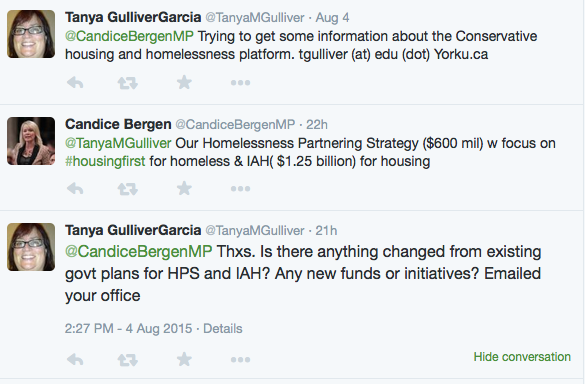2. Target investments to chronically and episodically homeless people
Directive 1 of the current Homelessness Partnering Strategy speaks to the issues of addressing chronic and episodic homelessness. This directive is connected to the overall Housing First approach of the federal Conservative party in its role as government. Communities must house 90% of its chronically and episodically homeless populations before it may focus Housing First interventions on other groups. The threshold for this definition of chronic or episodic homelessness is fairly low but may still exclude youth and families.
In the 2013 Economic Action Plan, the Homelessness Partnering Strategy (HPS) was renewed for a five year period (up to March 2019) in the amount of nearly $600 million over the five years. This works out to approximately $119 million per year. This direction was affirmed in the 2014 Economic Action Plan.
The Conservative Party also renewed the Investment in Affordable Housing Initiative (IAH) for five years in the 2013 Economic Action Plan. When asked on Twitter to provide details about the housing platform, MP Candice Bergen emphasized the existing investments in HPS and IAH.

As outlined in the SOHC 2014, while useful and necessary programs, both HPS and IAH need significantly more investment in order to end homelessness. For example, SOHC 2014 recommends that combined spending of $372 million projected for 2016-17 be increased to $624 million. Both HPS and IAH are also currently set to expire in March 2019 and Conservatives have not announced whether they will be renewed if re-elected. SOHC 2014 recommends an extension to these funding programs.
